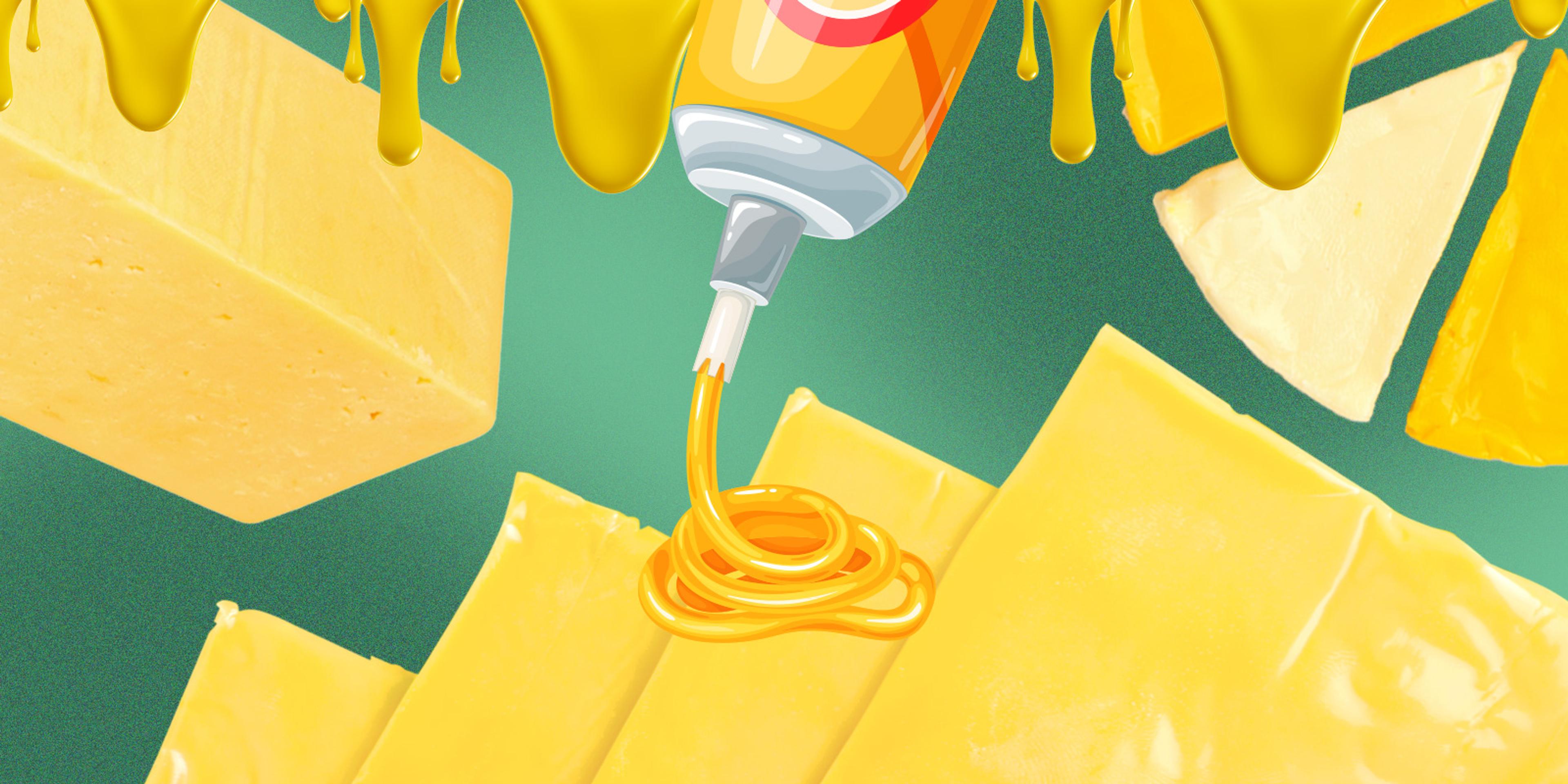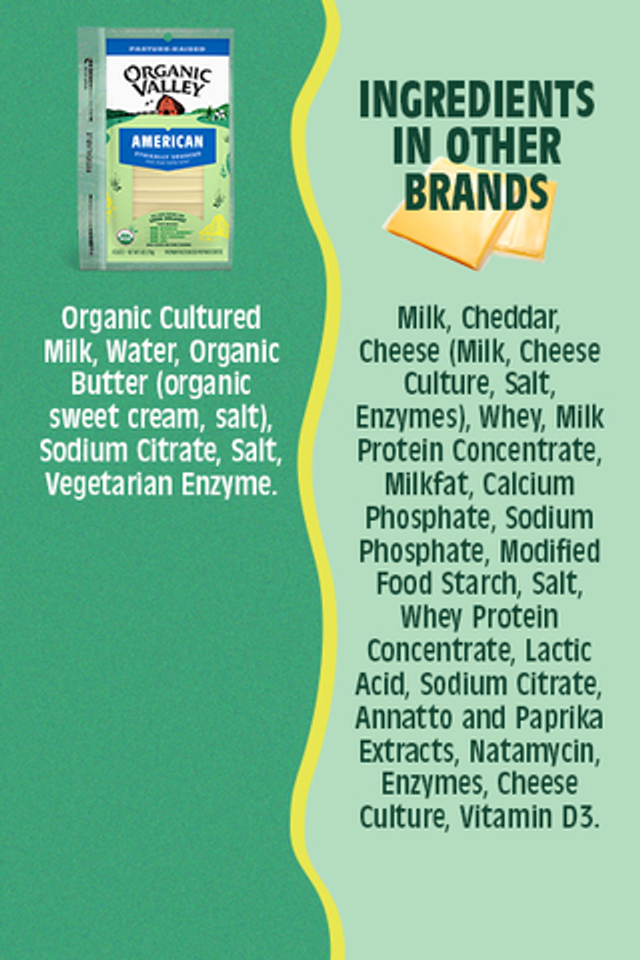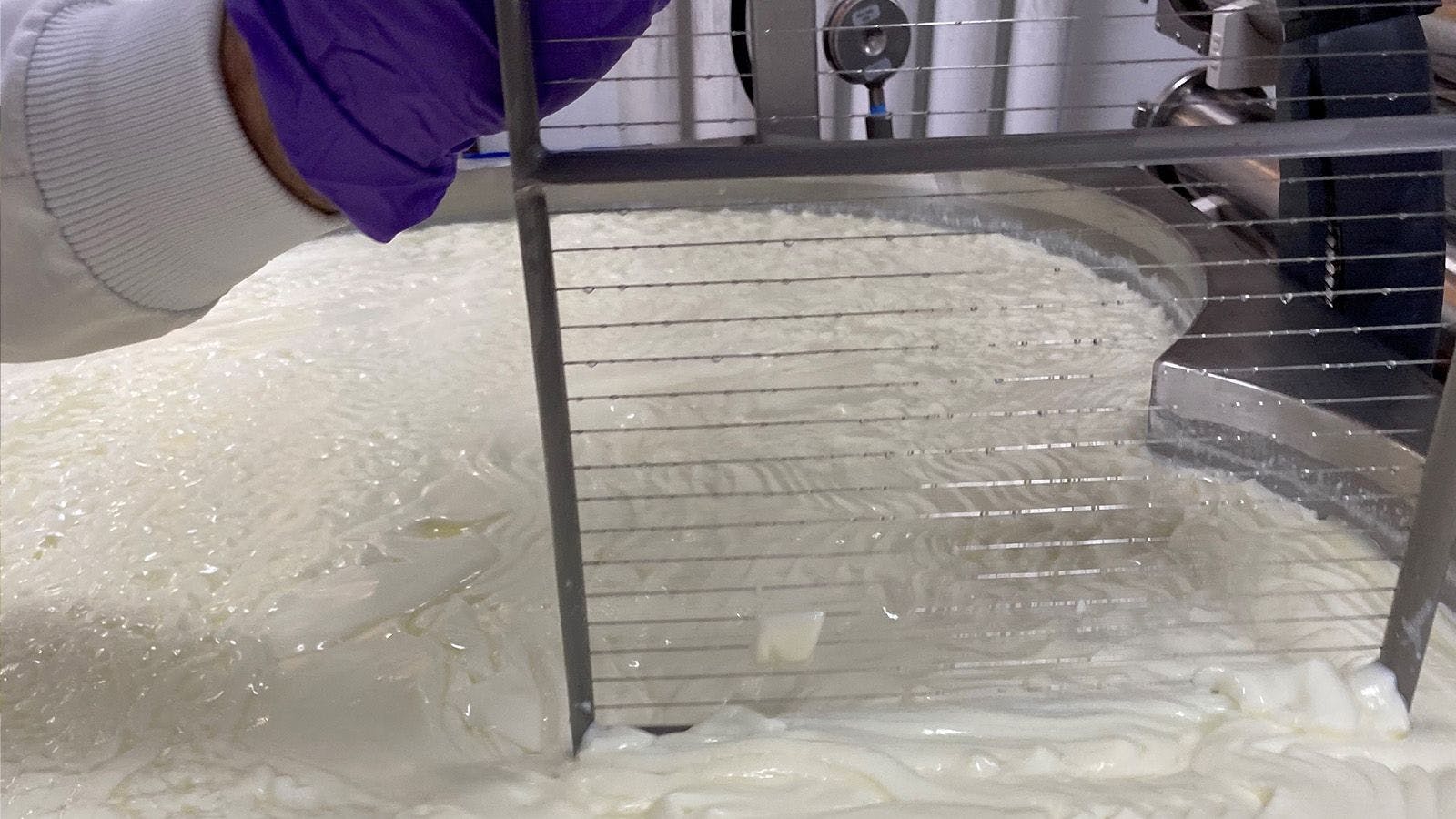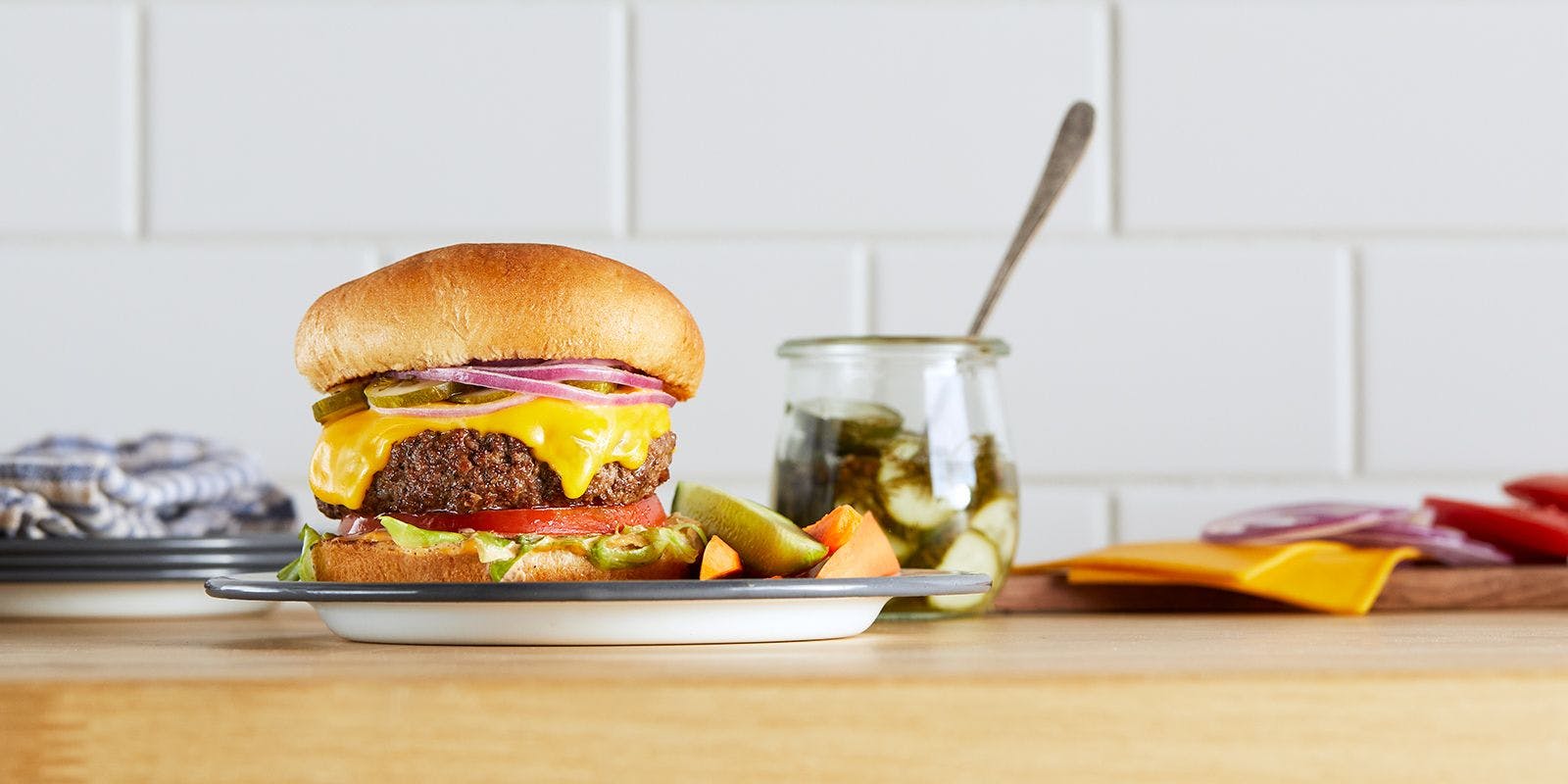
Food
What Is Processed Cheese, Anyway?
Processed cheese often gets a bad rap, but it is just as real as any other cheese. It can even be organic and provide key essential nutrients and minerals.
Processed cheese also often gets confused with “cheese products.” You’ve probably seen canned cheeses, whipped cheeses, sliced cheeses, cheese in jars and cheese in blocks, but some of these are considered “cheese products” rather than “processed cheese.”
Guess what? Organic Valley even has a processed cheese — a really good one, according to judges. We’ll share more about our award-winning American Cheese Slices later in this article.
Let’s start by taking a closer look at what processed cheese actually is and why it can be healthier than you might think.
What Is Processed Cheese?
So if processed cheese isn’t the big, bad evil guy that you think it is, then what is it? Well, it’s not 100% cheese, but it is made of all real food ingredients. When we process cheese, we make it so it does things it wouldn’t otherwise do, like melt more easily on a grilled cheese sandwich for a better cheese pull. Yum!
“A good processed cheese is smooth and uniform in color, melts uniformly, slices smoothly and has a compact body,” according to an article by Zey Ustunol, Food Science and Human Nutrition professor at Michigan State University.
Many common foods are processed, including canned vegetables and frozen foods. Even butter is a processed food, because it is churned from milk. And freezing, canning and churning are not the only means of processing food.
However, some are healthier than others — a frozen pizza is obviously less nutritious than packaged broccoli. Wine is processed, too (but we won’t get into the health-benefit argument).
Processing food simply means using mechanical or chemical operations to change or preserve it. This can include washing, grinding, mixing, cooling, storing, heating, freezing, filtering, fermenting, extracting, extruding, centrifuging, frying, drying, concentrating, pressurizing, irradiating, microwaving and packaging, according to the Institute of Food Technologists.
Processed Foods’ Nutritional Value
Some techniques can even enhance the health benefits of various foods. There are processing techniques that can alter food products in a manner that is more in line with nutritional health, according to the American Journal of Clinical Nutrition. For example, vitamin D is often added to milk, yogurt and orange juice.
Processed Cheese Regulations
Like other food, cheese must comply with certain standards to be labeled a certain way. The government regulates these standards, which are called “standards of identity.” They include things like the amount of moisture in the end product and which ingredients are used.
There are also rules about what can be called “American cheese.” To be called American cheese, the product needs to contain at least one of the following: cheddar cheese, washed curd cheese, Colby cheese or granular cheese.
There are also cheese products that fall outside the processed cheese standards of identity; these are called non-standardized products. These are governed by general food regulations, just like any other food; they just aren’t subject to certain rules about ingredients and moisture levels. Some common cheeses that fall outside of the FDA standards of identity include feta, farmer, asadero and ricotta cheese.

Types of Processed Cheese Defined
In the United States, processed cheese and related products are defined in three main categories (among others): pasteurized process cheese, pasteurized process cheese food and pasteurized process cheese spread. They have the following standards of identity, as regulated by the Food and Drug Administration.
Pasteurized Process Cheese
- It must have a moisture content not more than 1% greater than the maximum for the natural cheese used in the product (for example, cheddar process cheese has a maximum moisture level of 40%).
- Must contain a certain amount of fat on a dry basis.
- Allowable ingredients include cheese, water, up to 5% dairy fat, up to 3% emulsifying salts, acidifying agents, enzyme-modified cheeses (EMCs), salt, coloring, preservatives, smoke and spice.
Pasteurized Process Cheese Food
- The moisture content must not exceed 44%.
- The fat content must not be less than 23%.
- The minimum amount of cheese content must be 51%.
- Allowable ingredients include all of the pasteurized process cheese ingredients, milk and whey (liquid or powder).
Pasteurized Process Cheese Spread
- The moisture level must be between 44% and 60%. Regulations allow for more moisture in this category so that the product is easier to spread.
- The fat content has to be at least 20%.
- The cheese content minimum is 51%.
- Allowable ingredients include all of the pasteurized process cheese ingredients, and a minimal amount of antibacterial natural food preservatives, gums and sweetening agents.
Other Processed Cheese Products
Now that we know about processed cheese, what are the cheese products mentioned in the beginning? There are also a few categories of processed cheese that aren’t regulated by the federal government, including pasteurized process cheese product, pasteurized process cheese sauce and pasteurized prepared cheese product. However, this doesn’t mean that they are not food or cheese. It just means that they aren’t subject to certain regulations in regard to ingredients, moisture levels and fat levels.
Devin Thorson, Organic Valley product development manager, can help us understand the details (and this guy knows his way around a slice of cheese!). Read on.
Pasteurized Process Cheese Product
This is an undefined category for products that aren’t limited by the standards in the Code for Food Regulation (CFR). These products don’t have any limits on fat or moisture levels. A cheese product might be in this category if the manufacturer wanted to use different ingredients that aren’t listed in the federal regulations. According to the article by Ustunol, this can “include vegetables, meats, fruits, herbs, flavors, colors and spices.”
Pasteurized Process Cheese Sauce
Cheese sauce is cheese mixed with gums and stabilizers to make it last longer on the shelf but in sauce form. Anything that is spreadable cheese but doesn’t fit into the CFR standard restrictions would be in this category.

Pasteurized Prepared Cheese Product
These products are often very similar to pasteurized process cheese products but don’t follow the exact regulations in the CFR. They might have ingredients that boot them out of that classification. This is where Organic Valley’s American cheese slices fall, due to using butter as a fat source.
Not all pasteurized prepared cheese products are created equal. Some have a higher cheese concentration than others, like Organic Valley’s American cheese. It contains a lot of cheese and not many other ingredients. Some other brands’ pasteurized prepared cheese products have a long list of ingredients.
Is Processed Cheese a ‘Fake’ Food?
No! Processed cheese is made of all real ingredients. Just because a processed cheese product may look like plastic doesn’t mean it’s actually made of plastic. “Processed cheese” doesn’t equate to inferior quality, either — it’s just a different way to make a cheese product. “All cheese, even natural cheese, is processed in some way, shape or form,” Thorson said. “(Processed) cheese is just slightly more processed, as it’s basically breaking down that already-made cheese into a more smooth product.”
Processed Cheese Ingredients
So what’s in processed cheese, then? It usually contains the following:
- Cheese (of course)
- Water
- Acidifiers (this can be things like lemon juice or vinegar)
- Emulsifiers (usually emulsifying salts)
- Salt
- Food colors (which can be organic)
Is there Organic Processed Cheese?
Yes, and Organic Valley has it! Like all Organic Valley cheeses, this processed cheese is completely organic. Check out our American Cheese Slices — our white processed cheese took first place in its class as “Best in Class” in the 2024 World Championship Cheese Contest. Our yellow processed cheese won second place in its class.
How Processed Cheese Can Be Organic
Just like other certified organic products, processed cheese can be made from all organic ingredients. This is what makes the cheese organic, regardless of how it’s processed. If any new ingredients are added to the cheese to make it melt more easily, for example, those ingredients must all be organic as well. Even any added color agents must be organic for the cheese to qualify as organic! Organic Valley’s American cheese, for example, uses the annatto plant for coloring.
Organic processed cheese has all the following characteristics:
- Besides not using genetically modified ingredients, organic processed cheese can’t use any artificial colors, flavors or preservatives such as sodium benzoate and polysorbate 60 and 80.
- While organic foods are allowed to use emulsifying salts like sodium citrate and phosphate salts, all ingredients must be approved by the USDA.
- The process used to create or refine each ingredient must be suitable for organic use. This applies only to ingredients for which there is no organic equivalent available.
How We Made Our American Cheese Slices
Part of Thorson’s job is crafting new cheese products, based partly on shopper feedback. He found that organic shoppers wanted an organic or clean-label processed cheese that still functioned the way they would expect it to. Thorson carefully crafted Organic Valley’s American cheese to have a high cheese content compared to other ingredients. The goal was to have smooth cheese that still has a great flavor and organic ingredients.
Thorson used organic butter from Organic Valley’s small family farmers as a fat source to increase the dairy content and preserve taste. He then used what he considers the cleanest and simplest emulsified salt: sodium citrate. He added just a small amount of it, at the lowest percentage possible, to achieve that smooth, melting functionality that consumers love. In terms of category, Organic Valley’s American cheese slices fit into the premium “pasteurized prepared cheese” category.
The Ins and Outs of Organic Valley American Cheese
When you buy Organic Valley’s processed American cheese slices, you can be sure of a few things:
- It’s certified USDA organic.
- It meets the standard to be called “American.”
- It’s made with milk from organic pasture-raised cows.
- The ingredients come from farms that use no antibiotics, synthetic hormones, toxic pesticides or GMOs.
- It has only seven ingredients, all of which are organic and vegetarian-friendly.
- Ingredients include organic cultured milk, water, organic butter (organic pasteurized sweet cream, salt), sodium citrate, salt, organic annatto (for color) and vegetarian enzymes (no animal-based enzymes).
Takeaway — Don’t Discount Processed Cheese
So, processed cheese isn’t so bad after all. There’s no need to shy away from it if you’re looking to live an organic and healthy lifestyle. You can have your melty cheese on your grilled cheese sandwiches guilt-free. When you do make it to the grocery store to stock up on processed cheese, make it Organic Valley.
You can rest assured that it’s certified organic, comes from small family farms and isn’t chock full of ingredients you can’t pronounce. That’s just the Organic Valley way.
Check out our store locator to find Organic Valley cheeses near you.
Related Articles
- Tags:
- food labeling

















